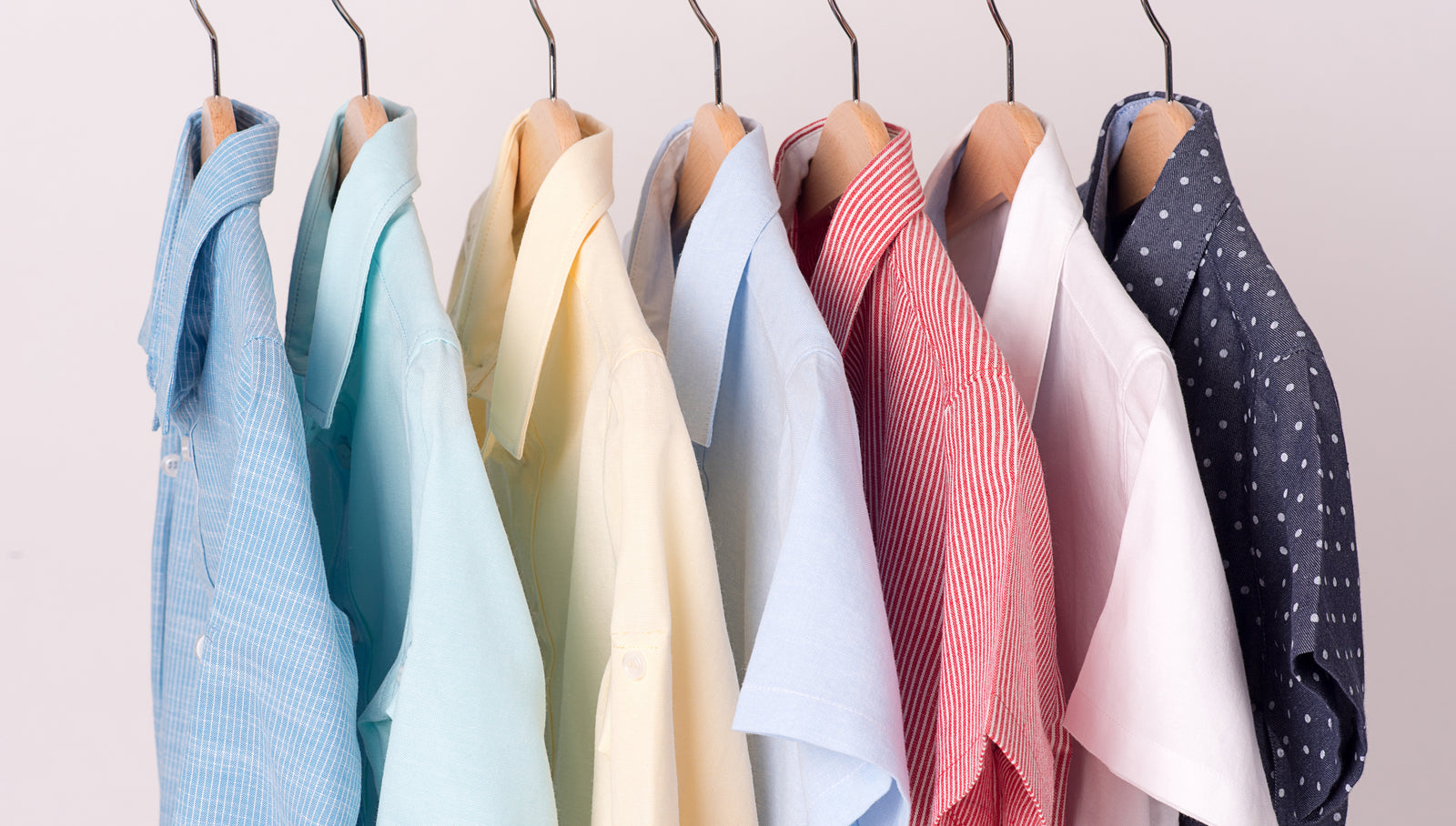Your Cart is Empty

In our fast-paced world, finding clothes that look good and feel good can be quite a feat. You want to look your best, yet you also want to be as comfortable as possible, especially if you sweat a lot. You may feel like you’re on a never-ending search for the most breathable fabrics, but it doesn’t have to be that way.
Fabrics that don’t show sweat are often breathable to help prevent sweat. Breathable fabrics allow air to flow through them easily, which speeds up sweat evaporation and keeps you cool. Moisture wicking fabrics also keep you comfortable and dry when sweating; not all breathable fabrics are moisture wicking and vice versa though.
Here we look at the nine most breathable fabrics to help you understand more of how the materials in your wardrobe may be helping (or hurting) your sweat issues. This list of breathable fabrics can serve as a guide when you purchase new pieces too.
This post was originally published in November 2019 and was updated for accuracy in February 2021.
You probably already know that cotton is breathable. In fact, cotton is one of the most breathable fabrics, and offers comfortable and fashionable options in both casual and professional attire. It is not only breathable but also durable and soft. It is an easy-care option, which means no costly dry cleaning. If you find you sweat less when you are cooler, cotton is a good option.
Downside: Cotton tends to absorb moisture instead of wicking it away from your skin. If you tend to sweat regardless of the temperature, it’s not the best choice for you.
Breathable fabrics allow air to flow through them easily, which speeds up sweat evaporation and keeps you cool
Polyester is a popular fabric used in workout clothing and activewear because it is lightweight and breathable. But is polyester breathable, really? Yes – polyester is breathable; it’s lightweight and water-repellent so moisture on your skin evaporates instead of soaking into the fabric. Does polyester make you sweat, or remove sweat? Technically, no. But because it’s not absorbent, the sweat doesn’t absorb into the fabric.
Downside: Polyester tends to retain odors and can even contribute to bacteria growth, which attributes to lingering odor after washing.
Given that Nylon is often used in activewear, you might wonder: is nylon breathable? It varies in breathability based on how the nylon is made or blended. Generally though, nylon wicks away moisture and it also dries quickly should you break a sweat.
Downside: Nylon tends to retain odors.

When checking the labels of your clothes, you might notice that rayon is used a lot. This synthetic fiber has become common in clothing, but is rayon actually breathable – or will it make your sweat problems worse? Rayon doesn’t cause you to sweat because it offers moderate breathability and has a silky texture. For the most part, rayon also drapes nicely and dries quickly if you do sweat.
Downside: Rayon doesn’t wick away moisture and requires dry cleaning.
This is the go-to summer fabric, especially for casual clothes. It requires minimal care yet offers excellent breathability due to its large fibers and open weaves.
Downside: Linen tends to absorb moisture instead of wicking it away. Linen also dries slowly so avoid it if you anticipate an exceptionally sweaty day.
Silk is a popular fabric choice for underwear and higher-end casual summer wear. Given that it's not used for insulation, you might wonder: is silk breathable? While described as luxurious, silk is also lightweight and breathable. That makes it a great fabric for both under layers and on hot days.
Downside: Silk tends to retain odor, and it requires hand-washing.

This is a form of high wet modulus rayon. It’s popular for undergarments because it is exceptionally soft and durable. It is a natural fabric made of beech tree wood pulp, which is why it’s so breathable. Micro modal is 50 percent more absorbent than cotton so perspiration is wicked away from the skin, leaving you feeling dry.
Downside: Micro modal is prone to issues with pilling and stretching, which is why it is most often used for underwear and pajamas.
Merino wool is usually thought of as a winter fabric, but it is also used in summer apparel. Why? Because it breathes well, wicks away moisture and doesn’t retain odor.
Downside: Merino wool is less durable than other fabrics, and some people find it itchy, even with today’s smoother weaves. It also may require hand-washing and air-drying to retain its shape.
Breathable fabrics help you look your best, even when you are sweating the most.
Chambray is like denim. It is a tightly woven cotton fabric, which means it is sweat-absorbent yet breathable. It is lighter weight than denim, which makes it a good choice for summer wear.
Downside: Chambray is not as durable as denim and tends to easily wrinkle.
Today's apparel features many breathable fabrics, ranging from all natural cotton to synthetic polyester. Each type of fabric offers an advantage if you experience situational or even excessive sweating.
If you have hyperhidrosis or excessive situational sweating, there are many clothing options to help you manage. Sweat-wicking fabrics, anti-odor fabrics, breathable fabrics, and sweat absorbing clothing make living with sweat easier than ever.
Ejis has combined the power of these technologies to create the best sweat proof micromodal and anti-odor undershirts and underwear on the market today. (Buy on our shop or on Amazon.)


Sweaty feet are a natural occurrence for most of us at one point or another. The sweat produced by our feet helps to keep them cool and the skin moist. However, because each foot has over 250,000 sweat glands, foot sweat can be troublesome for someone who suffers from hyperhidrosis or excessive sweating. When excessive sweating occurs, it can cause smelly feet. Check out what causes sweaty feet and tap into 9 easy ways to treat smelly feet.
